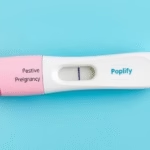Understanding Implantation Bleeding vs Period
In this article, we will be talking about implantation bleeding vs period. Implantation bleeding occurs when a fertilized egg attaches itself to the lining of the uterus, leading to light spotting that usually happens around the time a woman would expect her menstrual period. This can often cause confusion among women who are monitoring their menstrual cycles or trying to conceive.
Typically, implantation bleeding is lighter and shorter in duration compared to a regular menstrual period. While a period can last anywhere from three to seven days and may be accompanied by heavier flow and cramping, implantation bleeding usually lasts only a couple of days and features a much lighter discharge. Understanding the differences can help women interpret their bodies more accurately and guide them in making informed decisions about their reproductive health.
The Signs of Implantation Bleeding
Distinguishing between implantation bleeding and a menstrual period is crucial for many women, especially those trying to conceive. Knowing the signs can help in identifying whether you are experiencing early pregnancy symptoms or the start of your menstrual cycle.
Implantation bleeding typically presents as:
- Brown or pink discharge: Unlike the bright red blood seen during a period, implantation bleeding often appears brown or light pink.
- Shorter duration: As mentioned, implantation bleeding usually occurs for 1 to 3 days, while menstrual periods last longer.
- Minimal cramps: The cramps associated with implantation are often much milder than those experienced during menstruation.
- Timing: Implantation bleeding occurs around 6 to 12 days after conception, which may coincide with when you expect your period but will not last long.
Differences Between Implantation Bleeding and Period
To better understand implantation bleeding and its distinctions from a regular period, it is essential to analyze both scenarios systematically. This involves examining several factors:
Blood Flow
Implantation bleeding is usually very light, sometimes just spotting, while periods can vary from light to heavy flow.
Color
The color of the blood can be a significant indicator. Implantation bleeding typically shows colors like pinkish or brown, whereas menstrual blood is often a bright or dark red.
Duration
Implantation bleeding can last anywhere between a few hours to a couple of days, whereas periods last longer, usually around 3 to 7 days.
Cramps
Mild cramping may occur with implantation bleeding, but it is often less intense compared to menstrual cramps, which can vary in severity.
Hormonal Changes
In a non-pregnant cycle, hormonal fluctuations lead to menstruation. In pregnancy, the absence of menstruation can directly correlate with hormonal changes that support the developing embryo.
When to Take a Pregnancy Test
If there is uncertainty about whether the spotting is due to implantation bleeding or an upcoming period, timing is everything when it comes to taking a pregnancy test. Generally, a pregnancy test can yield accurate results about a week following a missed period.
If you experience light bleeding around the time your period is due, consider waiting a few extra days before taking a test to allow for more accurate hormone level detection in your urine.
Here are some tips on when to take a pregnancy test:
- After a missed period: This is typically the most reliable time to check for pregnancy.
- Morning urine: It is advisable to take tests first thing in the morning, as this urine is more concentrated for accurate results.
- Follow test instructions carefully: Different brands may have specific instructions for optimal use.
Frequency of Implantation Bleeding
Implantation bleeding is not common for every woman. In fact, studies estimate that only about one-third of pregnant women will experience it. If you are actively trying to conceive and do notice some light spotting, it is essential to remain calm and pay attention to other symptoms that may follow.
If there is an absence of menstruation accompanying the spotting, or if there are other signs of early pregnancy such as nausea or breast tenderness, it is advisable to take a pregnancy test or consult a healthcare provider for further guidance.
Consulting a Healthcare Provider
If there is any doubt or concern about whether your symptoms are indicative of implantation bleeding or the onset of your period, consulting a healthcare provider is crucial. They possess the expertise to assist in interpreting your unique symptoms and can offer the appropriate medical advice.
A healthcare provider may recommend blood tests or pelvic exams to determine the cause of any unusual bleeding. Always remember that early detection can be vital in managing reproductive health.
Final Thoughts
Understanding the differences between implantation bleeding and a menstrual period is essential for women, especially those who are trying to conceive. Recognizing the signs of each can help in better interpreting one’s own body signals, thereby leading to more informed decisions regarding reproductive health.
Implantation bleeding occurs around the time a woman might normally expect her period but is typically lighter, shorter, and of a different color than menstrual blood. The hormonal changes that accompany pregnancy can also significantly alter the physiological responses, making it crucial for women to monitor their cycles closely.
When in doubt about your symptoms, or if there is any unexpected spotting, it is best to consult a healthcare provider. Understanding these elements can assist not only in recognizing pregnancy but also in promoting overall reproductive health. Remember that each woman’s experience is unique, and awareness of one’s body can provide deeper insights into reproductive wellness.
Frequently Asked Questions
1. How can I tell the difference between implantation bleeding and my period?
Look for differences in color, flow, and duration. Implantation bleeding is usually lighter, shorter, and may appear more pink or brown than red.
2. Can implantation bleeding happen at any time during my cycle?
No, it occurs about 6 to 12 days after conception, which may align closely with your expected period.
3. Should I take a pregnancy test if I suspect implantation bleeding?
Yes, ideally wait until a week after your missed period for the most accurate results.
4. Is implantation bleeding a normal occurrence in pregnancy?
Yes, many women experience it, but not all. It is generally considered normal and not a cause for concern.
5. When should I see a doctor regarding my bleeding?
If the bleeding is heavy, accompanied by pain, or if you are uncertain, it’s best to consult a healthcare provider.
Further Reading
What Type of Psychotherapy Is Best for Anxiety?







